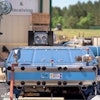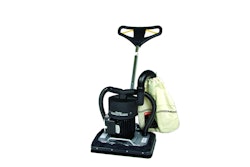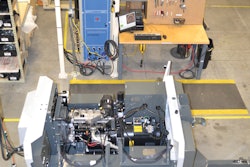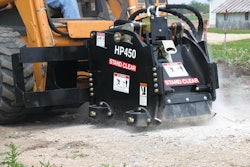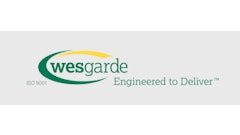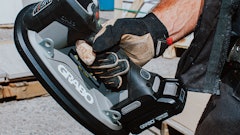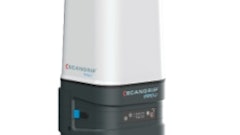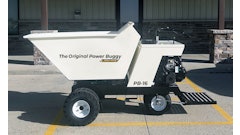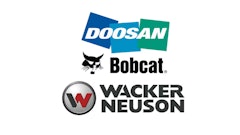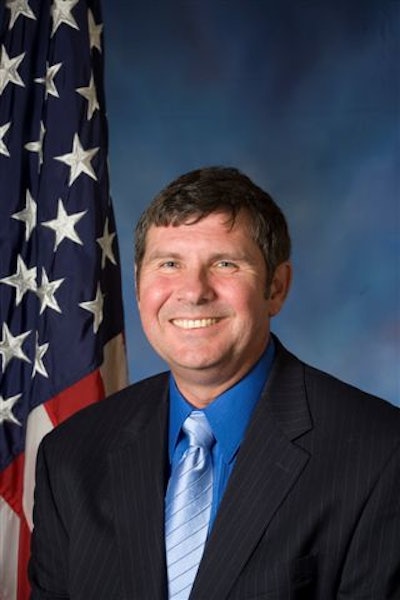
In North America, the need for high-quality operator training for aerial work platforms is steadily becoming more accepted as a vital necessity. More than ever before, operators are getting trained by reputable organizations that require hands-on demonstration of proficiency. But what about supervisors? While not operators, these individuals have a very wide range of responsibilities on the jobsite, and are the company's ambassador as well. What can be done to ensure they receive the knowledge and skills they need to keep themselves and their employees safe? We asked several industry stakeholders for their opinions on this subject. Following is an excerpt from that discussion.
Jenny Lescohier: Who is ultimately responsible for operator safety on the jobsite?
Jim Maddux: At OSHA, we place the safety responsibility on the employer of the operator. From a legal standpoint, we don't hold operators responsible for their own safety. We do recognize there are situations where employee misconduct can result in a safety issue, but employers really need to make sure they have effective policies and training programs, and that they supervise their employees in a way that minimizes their unsafe actions.
Tony Groat: Employers are ultimately responsible, but the employee needs to make sure they are compliant with all of the policies and programs provided to them. Often in North America, our mode is "We'll find a way to get things done." While that's a strength in productivity, from a safety perspective, it's definitely a weakness.
Jim Stephens: I agree that the responsibility lies with the employer, but the employee has a responsibility and should be held accountable for his actions. The equipment operator needs to accept and learn the training offered and follow the policies of best work practices that have been put in place.
Jasper Vitale: I agree. Employers are responsible for providing the tools and training, but I still think the onus falls on the person who does the operating. We need to be their support.
Lescohier: Where does that leave the role of the supervisor? What does he or she need to know about the safe use of aerial work platforms?
Stephens: At Blue Line Rentals, our philosophy is anybody who touches a piece of equipment needs to be trained to operate that piece of equipment. That includes our branch mangers, because I cannot ask our managers to manage and lead their crews if they don't have that same training.
Groat: A supervisor is in place to monitor performance and ensure compliance with rules and regulations. Under that premise, they have to know everything. In general terms, the operator needs to know what he's doing and how to do it safety. A supervisor's responsibility goes beyond the scope of the operator, because he's the one who selects the equipment and evaluates the jobsite for potential hazards. Unlike a crane operator, whose job is to operate cranes, an aerial work platform operator's primary job is normally something else - he's an electrician, plumber or what have you. An aerial work platform is really a very specialized tool they need to operate. The responsibilities of the supervisor are to make sure they're selecting the right equipment for the job, that worksite assessments have been done, the risks have been properly communicated, they have enough knowledge to adequately supervise their employees' performance and provide feedback, and recognize when retraining is needed.
Vitale: I agree 100 percent. The aerial work platform is a tool that is used to get the operator to where he can do the work. From a supervisor's standpoint, we need to provide the operator with the right tool to do what they need to do.
Maddux: In our view, the supervisor is really important in the safety process. A lot of work is done where there's only one supervisor at the jobsite. When it's a small crew, the supervisor is, in that case, the employer's representative at that construction site. He's not only responsible for for doing whatever work they've agreed to do, but also for taking on the safety responsibilities of the employer. There are a couple of standards people don't think about with construction work but which are very important. One of them is 1926.20b, and it's for every construction employer. To quote: "It shall be the responsibility of the employer to initiate such programs as may be necessary to comply with this part." Paragraph two says, "The program shall provide for frequent and regular inspections of the jobsite, materials and equipment to be made by competent persons designated by the employer." That's going to be the supervisor. What our standards require is that this supervisor take a look at that jobsite and work that's going to be done and figure out how to do it safety. How can they tell the operator of the aerial work platform that they're doing their work improperly unless they know how to do it themselves?
Lescohier: Do most employers fully understand this responsibility?
Maddux: I don't have any data on what the level of understanding is, but this has been a requirement of OSHA standards since the day the agency came into being. This is one of the first standards we adopted and it was actually a requirement for contractors doing federal work for three years before OSHA was created, under the requirement of the Construction Safety Act. I want to make sure people are aware of this requirement, especially people with smaller companies who might not be quite as aware as they need to be of their legal responsibilities.
Groat: My own perception, based on 40 years in the industry, is that understanding of the depth and breadth of supervisory responsibilities is not in place. Too many contractors and employers have the general belief that getting their operators trained is the finish line. My comment is, when you get them trained, that's the starting line, not the finish line. There's a wide range of knowledge that needs to be imparted. I don't belive that most employers understand that thoroughly.
Lescohier: What do we do to educate them, to make sure the supervisor knows what his or her responsibilities are?
Groat: First we need to raise awareness of the need for supervisors to be properly trained. Then we need to develop the tools so they can achieve that.
Maddux: That's exactly right. The employer is responsible for training their supervisors just as much as they're responsible for training the front-line employees. Supervisor are also employees and they need to be given the training they need to do their job well.
Vitale: As supervisors, we are employees of the company but we are also representatives of the company wherever we go, and we are responsible for the employee that actually does the work.
Lescohier: Do you feel it's easy for you to get the information you need and get it to the people who need it, or is it a struggle?
Vitale: I don't feel it's a struggle. We trained 60 some people over two days and all the supervisors went through the training at the same time. We felt the investment of time and money for training was well worth it if we could eliminate even just one safety incident down the road.
Stephens: That's the same approach we took. The entire safety staff went through a train the trainer program from Genie. From there, we made sure that every branch has two, three and sometimes four people who are instructors so the message gets out there that this not a one-time thing, but a continuous training program that's required. And it worked. Now there's an understanding from the regional vice presidents and district managers on down that when you operate an aerial work platform, not only is there a regulatory requirement that you be trained, but it's just good business practice. It's the safe thing to do for our employees.
Lescohier: What about the fact there are so many different kinds of models in use and they all require a different knowledge base, with different standards. How do you handle that?
Stephens: It's pretty straightforward. Every branch trains specifically on the equipment they have.
Vitale: We don't normally have many specialty machines. We have the general ones that we use on a regular basis, and the operators become more familiar with those. If we do have a special need, we actually slow down, take the time, read the manuals, do what we need to do. We ask the questions, look it up, research it.
Groat: The standards say we train on general classifications of equipment, and all the training is general in nature. Then, because of the wide range of aerials that fall within the scope of those classifications, we have what's known as familiarization. Familiarization at its most fundamental says I have to go over the safety devices and control functions of that specific machine before I get on it. Going back to the broader issue of supervisor training, if someone's going to be on this equipment for the first time, as a supervisor, I had better give them the appropriate time to become familiar with the actual use and operation of that machine. There are some non-regulated aspects to this where good management and common sense come into play. For example, it takes time to get acclimated. It's like driving a car with a standard vs. automatic transmission. I have a driver's license, but the operation of those cars are different. As a supervisor, you need to be able to recognize that and take the appropriate action to allow the operator to become familiar.
Vitale: We can talk about how to drive with a manual transmission, tell somebody on paper how to do it, but when you hand them a car with a manual transmission, they're not going to take off and be proficient at it until they actually try to drive it.
Groat: In that same vein, if an operator is trained on a straight-mast boom and then you give them an articulated boom, it's like going into an airplane cockpit. All of a sudden there are a lot more controls in that articulated boom. While both those booms have cylinders and masts that will raise that platform, the articulated boom takes a little more time to become proficient with it.
Maddux: We think the employee needs to be trained on each and every piece of equipment they're required to operate. If the job means they need to operate five different kinds of equipment, then they need to be trained on each and every one of them so they can do the job right.
Lescohier: We all agree supervisors need to be trained. But do they get trained as an operator, or as a supervisor, or both?
Vitale: We trained right along side the operators; got the exact same training. We didn't think it made sense not to do that.
Stephens: That's exactly how we took our approach as well.
Groat: There are some differences between what a supervisor needs to know and what an operator knows. An operator is not selecting the equipment, or going to the jobsite before he needs to get on the machine to do his work. IPAF created an AWP for Managers program because we recognize the need for supervisors get the training they need. There are some broader levels of knowledge specific to aerial work platforms that a supervisor needs to have that an operator would not.
Lescohier: Have any of you been trained through IPAF's AWP for Managers course, or know anyone who has?
Stephens: I have not.
Vitale: I have not either, but I will say the training we did go through with IPAF touched on some of those things. As operators, we were instructed on doing a site evaluation and the need to be aware of where all the equipment will go. It's not necessarily that operators are going to do the site evaluation, but having that awareness is important. I have not touched an aerial work platform control since I completed the training but I have supervised and I can tell you that my operators stay aware of the site.
Maddux: There's a need for supervisor training programs that move beyond the hard technical skills, such as looking at work surfaces and selecting equipment. We also need to take a look at providing training to supervisors for management skills, leadership and communication ideas that can make them a more effective safety leader on the jobsite. It's not just what they say, but how they set an example on safety that makes a huge, huge difference.
Stephens: We have a three-day safety leadership for branch managers course. It goes through safety leadership, problem solving, hazards and risk analysis, accident reporting and investigation and more. I agree that our managers have so much on their plate, we have to give them those extra skills to be not just a manager but a safety leader. Some might resist this, but when you look at your dollar values, if we prevent loss, then the bottom line goes up.
Lescohier: One challenge is making consumers understand the importance of high-quality training. Do you feel there are enough high-quality choices out there or do people get swayed by the cheap and easy options?
Stephens: It's like any grocery store - there's lots of stuff on the shelf. There's stuff that's high quality, and there's stuff that's really flashy to get you to buy the product, but the product is junk. You have to be able to figure out what's high quality, best value and makes sense. You get what you pay for. I've found once you explain the value of high-quality training to higher-level executives and raise their awareness, it's usually pretty well accepted. But without that extra education, they look for the quickest and cheapest option.
Vitale: We look deeply at what we're getting for our money. The $50 course doesn't offer as much. You get what you pay for is so true. We look at what we need and do the research, consider the training firm's reputation, ask questions, check references and so on.
Maddux: What's really important is that the training be effective. In order for it to be effective, it needs to be thorough, it has to be in a language the worker understands, and at a literacy level the worker understands. At the end, there needs to be some way to determine if it has actually sunk in, that the employee has gotten the knowledge, skills and ability to do the job safely.
It's important to note that OSHA does not approve products, services, trainers or anything else on the product side of the safety world. Whenever you see one of those labels that says "OSHA approved," look at it very carefully because it has not been OSHA approved at all. What I prefer is when I see something that says it's OSHA compliant. That is perfectly acceptable. If someone can show that their service is OSHA compliant, that's a much more thoughtful approach to explaining exactly what their services actually do. If an employer is looking for training and wants to make sure it's OSHA compliant, then they should be talking to that trainer to make sure that is the case.
Groat: Several years ago, industry organizations got together - the American Rental Association, Associated Equipment Manufacturers, Associated Equipment Distributors, Scaffolding and Access Industry Association and IPAF - and developed the Statement of Best Practices for General Training and Familiarization for Aerial Work Platforms. That guidance gives the users some insight into doing an evaluation of a training program.
Lescohier: What are the biggest challenges with making sure supervisors who need training get what they need?
Stephens: There needs to be an upper-level executive commitment to the time it takes. Training takes time away from duties and every organization is lean. We need to sell upper-level execs on how the commitment is going to pay off down the road.
Groat: When we're creating training for any individual or task, it needs to be effective. It's not something that has to be long, but it has to be effective. We need to make it readily available and as effective and economical as possible.
Maddux: Front-line supervisors carry an awful lot of responsibility for a lot of things: administrative tasks, time keeping, making sure that certain behaviors are correct or that incorrect behaviors are corrected promptly. These supervisors are your company's representatives at the jobsite. What are you going to do to ensure they're really representing you?


